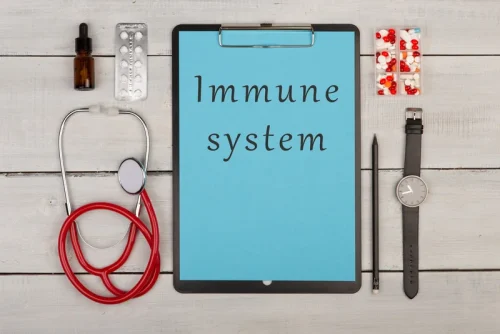
You’ll enjoy convenient, effective AUD treatment and guidance from a recovery coach. In Southern California, the best resource for individuals and families in crisis is Chapman House Treatment Centers. Located in Orange County, Chapman House has provided premium alcohol, drug, and behavioral health care treatment since 1978. Making up just 9% of alcoholics in this country, the Chronic Severe subtype highlights the profound negative impact of both genetics and early initiation of use. No two alcoholics are the same, but it can be helpful to categorize people who struggle with their drinking to understand how to provide them with the support that they need to get well.
Confidant Health: Customized Virtual Treatment for AUD

This second stage involves the withdrawal symptoms a person experiences when they stop drinking after becoming addicted. The basal ganglia have become reliant on alcohol for activation; without it, a person may feel anxious and irritable. The lack of alcohol can also activate the extended amygdala, making 5 types of alcoholics them feel more stressed. The negative emotional states in this second stage are bothersome enough that a person turns to alcohol to alleviate the discomfort, continuing the addiction cycle. The NESARC is a nationally-representative survey that looks at alcohol, drug, and mental disorders in America.
- Someone who is in the chronic severe subtype will often drink excessively daily.
- Someone with a family history of alcoholism may have an intermediate family subtype.
- Functional alcoholics have an average household income of almost $60,000 and the lowest rates of legal issues.
- For example, on “binge days,” members of this group often consume up to 14 drinks.
Alcohol Treatment with Dr. Wandler
- The National Institute on Alcohol Abuse and Alcoholism (NIAA) studied alcoholics and how they differ.
- Interestingly, while this group drinks less often than other alcoholics, they tend to “binge drink” more often and consume more alcohol during those binges.
- Since heavy drinking among young people is often seen as a phase, most young adult alcoholics suffer without seeking help.
- Individuals who drink chronically are shown to exhibit far more aggressive behaviours than other types of alcoholics, meaning that they often engage in antisocial behaviours and/or crime.
- Genetics and one’s home environment can play a role in a person’s risk for AUD and should be addressed in therapy as part of a comprehensive treatment plan.
- Because alcoholism has been identified as a disease, determining the exact manifestation and severity gives addiction specialists a powerful tool that can shape more personalized and effective treatment.
- Because young adult alcoholism is also cultural, it is easily dismissed as a stage of life and not an addiction.
Group members are more likely to be unmarried college students without full-time jobs and drink less frequently than the other groups but are more prone to binge drinking. They’re mostly male and rarely seek help for their alcoholism, but when they do, they usually turn to 12-step programs. But no matter your age, status, family, or subtype, alcoholism can create long-term problems that damage your health and relationships. Not all alcoholics know they suffer from a substance abuse problem because denial is a regular and expected aspect of alcoholism.
Severity Levels of Alcohol Use Disorder
In 2013, the National Survey on Drug Use and Health (NSDUH) reported that of those who needed treatment and didn’t receive it, approximately 95.5 percent didn’t feel they needed it. The question many of these professionals have been asking for the last few decades has been, “Are there different types of alcoholics? ”This article provides some of the historical attempts about the classification of alcoholics and explains the five different types of alcoholics as they are currently understood. Researchers have defined five types of alcoholics based on their age, drinking habits, reasons for this, presence of other mental health disorders, and their family’s history with alcoholism (4).

What Are the Types of Treatment for AUD?
That’s because they can balance their drinking with their personal and professional life. Moreover, many don’t believe they have a drinking problem until they start experiencing health issues. While this article isn’t a diagnosis, if you or your loved one fits the criteria of one of the models above, they may need help. FHE Health offers addiction treatment programs for any type of alcoholic and is ready to stand by you every step of your recovery.

Among the types of alcoholics, the young adult subtype is the most common. However, not everyone who binge drinks meets the criteria for alcohol use disorder. For example, binge drinking is considered unhealthy drinking, which is especially common among young people. In the privacy of their own homes, functioning alcoholic are not the confident, self-assured achievers they usually pretend to be when they’re hiding behind their facade. While family members may not be sure of what’s going on (although they often do have strong suspicions), they know the functioning alcoholic is dealing with a plethora of problems. Their anxiety and depression may be obvious, and their moodiness and secretiveness impact spouses, children, and other loved ones who are puzzled by their inconsistent behavior.
Now under protection: Traditional vegetables recognized by UNESCO in Kenya
Cope-motivated drinkers use alcohol to escape their problems, such as depression and anxiety. They’re more likely to be female and have low agreeableness, low self-esteem and high neuroticism. Get professional help from an online addiction and mental health counselor from BetterHelp.

Most Common Type of Alcoholic: Young Adult Subtype
- However, some do struggle with other addictions such as to cigarettes or marijuana.
- All types of alcoholism can contribute to severe and detrimental physical and mental health issues.
- Drinking more than moderate amounts of alcohol can increase the chances of dependence or addiction.
- That’s because they can balance their drinking with their personal and professional life.


Comment closed!